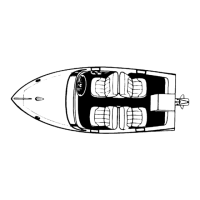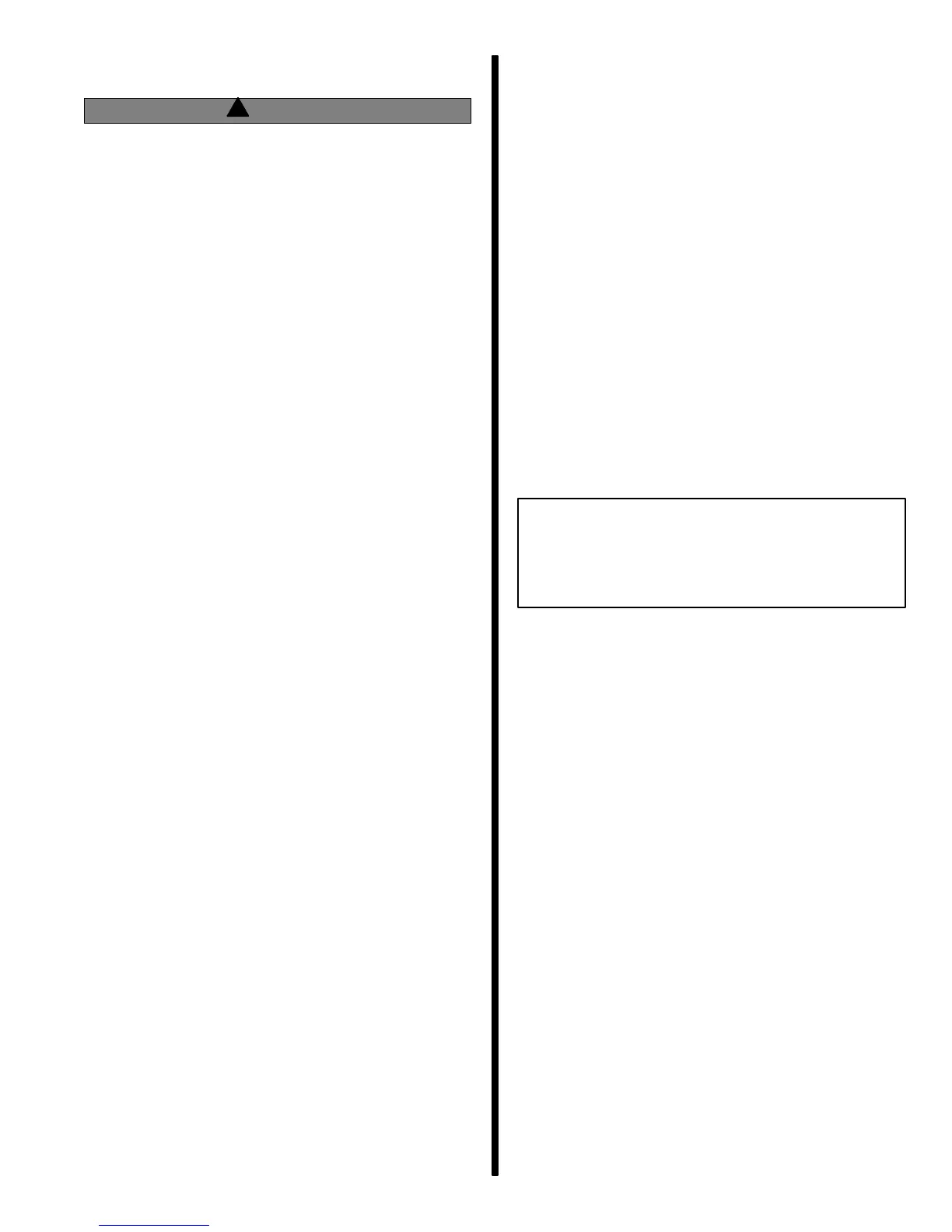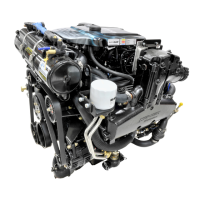CLOSED COOLING MODELS - 6B-2790-823225--1 1096
Draining Instructions
!
WARNING
Allow engine to cool before removing pressure
cap. Sudden loss of pressure could cause hot
coolant to boil and discharge violently. After en-
gine has cooled, turn cap 1/4 turn to allow any
pressure to escape slowly, then push down and
turn cap all the way off.
IMPORTANT: A wire should be inserted into drain
holes to ensure that foreign material is not ob-
structing the drain holes. On later models with
two piece petcock, removal of petcock may be re-
quired so that wire can be inserted completely
into drain hole.
IMPORTANT: Engine must be as level as possible
to ensure complete draining of cooling system.
IMPORTANT: Closed cooling section must be
kept filled year round with recommended cool-
ant. If engine will be exposed to freezing tempera-
tures, make sure closed cooling section is filled
with an ethylene glycol antifreeze and water solu-
tion properly mixed to protect engine to lowest
temperature to which it will be exposed.
IMPORTANT: Do not use Propylene Glycol Anti-
freeze in the closed cooling section of the en-
gine.
The following draining instructions apply to all en-
gines equipped with closed cooling. The location of
petcocks that require opening and hoses that require
removal are represented on the following pages for
the individual engines.
IMPORTANT: Observe precautions previously
outlined before proceeding.
1. Remove pressure cap from coolant tank.
2. Drain coolant from locations as shown for your
model and engine. (Refer to the appropriate dia-
gram on the following “Draining Diagrams”
page.)
3. After coolant has drained completely, coat
threads of drain plugs with Quicksilver Perfect
Seal and install drain plugs and hoses. Tighten
clamps and drain plugs securely.
4. Remove coolant recovery bottle from mounting
bracket and pour out coolant.
5. Clean system as outlined in “Cleaning System.”
6. Fill system as outlined in “Filling Closed Cooling
Section.”
Cleaning System
Closed Cooling Section
Closed cooling section of the cooling system should
be cleaned at least once every two years or
whenever decreased cooling efficiency is experi-
enced.
A good grade automotive cooling system cleaning
solution may be used to remove rust, scale or other
foreign material. Always follow manufacturer’s in-
structions for the cleaner.
If closed cooling section is extremely dirty, a pressure
flushing device may be used to flush out remaining
deposits. Flushing should be done in direction oppo-
site normal coolant flow to allow water to get behind
deposits and force them out. Refer to instructions
which accompany flushing device for proper hookup
and flushing procedure.
NOTICE
For information and procedures for draining
and flushing seawater section of cooling sys-
tem, refer to SECTION 6A. For cold weather or
extended storage, refer to SECTION 1B.
Seawater Section
Cooling efficiency of an engine with closed cooling is
greatly dependent upon heat transfer through the
tubes within the heat exchanger. During engine oper-
ation, contaminants within the seawater (such as
salt, silt, lime, etc.) collect on the inside of the tubes,
thus reducing heat transfer and greatly decreasing
heat exchanger efficiency. It is, therefore, recom-
mended that the seawater section of the heat ex-
changer be cleaned at least once every two years or
whenever decreased cooling efficiency is suspected,
as follows:
IMPORTANT: It may be necessary to remove heat
exchanger on some models. If heat exchanger is
removed, be sure to refill closed cooling section
with coolant.

